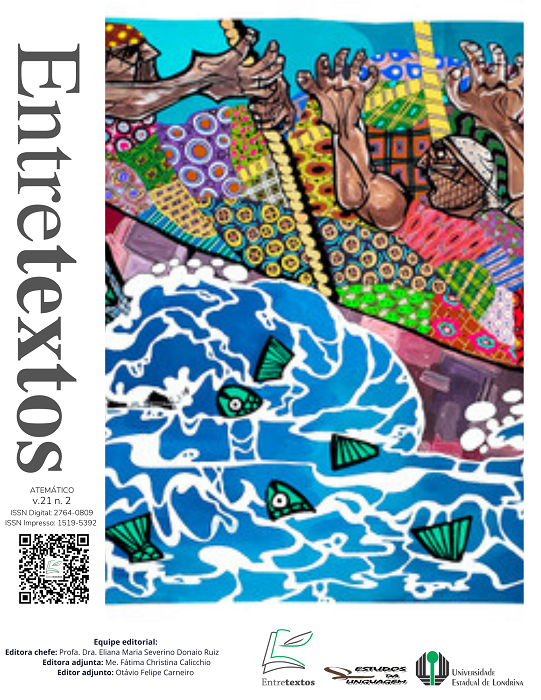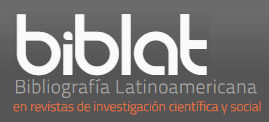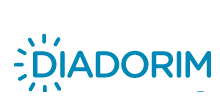Levels of conceptual metaphor in Cognitive Linguistics
DOI:
https://doi.org/10.5433/1519-5392.2021v21n2p63Keywords:
Metaphor, Cognitive Linguistics, SchematicityAbstract
This paper summarizes and discusses proposals in Cognitive Linguistics that suggest the existence of levels of conceptual metaphor. It aims to show the development of this particular topic and to highlight explanatory advances and gaps in the existing theory. I present a concise overview of levels of metaphor in the works of Lakoff and Johnson, Grady, Clausner and Croft, Cameron and then Kövecses’s multilevel approach. Metaphorical expressions with BUILDING source domains extracted from a corpus of Brazilian inauguration speeches are used to exemplify and fuel discussion. I point out that Lakoff and Johnson’s and Grady’s theory already assumed the idea of levels of metaphor. Clausner and Croft explicitly showed how metaphors vary in their levels of schematicity and productivity. Cameron made a metatheoretical interpretation of levels of metaphor. Kövecses propounded that metaphor involves the relation between structures at four conceptual levels and suggested ontological and contextual levels of analysis. I argue that the issue of the conceptual units involved in metaphor and the levels of analysis has been present in Cognitive Linguistics from the outset. Kövecses organized the levels of metaphor coherently, but differences between domains and frames remain imprecise.Downloads
References
BARSALOU, L. The human conceptual system. In: SPIVEY, M.; MCRAE, K.; JOANISSE, M. (ed.). The Cambridge Handbook of Psycholinguistics. New York: Cambridge University Press, 2012. p. 239-258.
BYBEE, J. Usage-based theory and exemplar representations of constructions. In: HOFFMANN, T.; TROUSDALE, G. (ed.). The Oxford Handbook of Construction Grammar. Oxford: Oxford University Press, 2013. p. 52-66.
CAMERON, L. Operationalising ‘metaphor’ for applied linguistic research. In: CAMERON, L.; LOW, G. (ed.). Researching and applying metaphor. Cambridge: Cambridge University Press, 1999. p. 3-28.
CIENKI, A. Frames, idealized cognitive models, and domains. In: GEERAERTS, D.; CUYCKENS, H. (ed.). The Oxford Handbook of Cognitive Linguistics. Oxford: Oxford University Press, 2007. p. 170-187.
CLAUSNER, T.; CROFT, W. Productivity and schematicity in metaphors. Cognitive Science, [s.l.], v. 21, n. 3, p. 247-282, 1997. DOI https://doi.org/10.1207/s15516709cog2103_1 .
COSTA, V. C. A palavra Brasil em discursos de posse presidencial da Nova República: panorama sociocognitivo (1990-2011). 2015. Dissertação (Mestrado em Teoria Literária e Crítica da Cultura) – Universidade Federal de São João del-Rei, São João del-Rei, 2015. DOI https://dx.doi.org/10.13140/RG.2.2.27541.78561 .
COSTA, V. C. A cultura das metáforas e frames de construção em discursos de posse presidencial brasileiros. In: CONGRESSO INTERNACIONAL SOBRE METÁFORA NA LINGUAGEM E NO PENSAMENTO, 6., 2017, Salvador. Anais [...]. Salvador: UFBA, 2017. p. 35.
CROFT, W. Construction Grammar. In: GEERAERTS, D.; CUYCKENS, H. (ed.). The Oxford Handbook of Cognitive Linguistics. Oxford: Oxford University Press, 2007. p. 463-508.
DABROWSKA, Ewa. Cognitive Linguistics’ seven deadly sins. Cognitive Linguistics, [s.l.], v. 27, n. 4, p. 479-491, 2016. DOI https://doi.org/10.1515/cog-2016-0059 .
EVANS, V. A Glossary of Cognitive Linguistics. Edinburgh: Edinburgh University Press, 2007.
EVANS, V.; GREEN, M. Cognitive Linguistics: an introduction. Edinburgh: Edinburgh University Press, 2006.
GIBBS JUNIOR, R. Metaphor wars: conceptual metaphors in human life. Cambridge: Cambridge University Press, 2017.
GOLDBERG, A. Constructions: a construction grammar approach to argument structure. Chicago: The University of Chicago Press, 1995.
GOLDBERG, A. Constructions at work: the nature of generalization in language. New York: Oxford University Press, 2006.
GRADY, J. Foundations of meaning: primary metaphors and primary scenes. 1997. 299 f. Tese (Doctor of Philosophy in Linguistics) – Graduate Division of the University of California, Berkeley, 1997a. Disponível em: https://escholarship.org/uc/item/3g9427m2. Acesso em: nov. 2020.
GRADY, J. THEORIES ARE BUILDINGS revisited. Cognitive Linguistics, [s.l.], v. 8, n. 4, p. 267-290, 1997b. DOI https://doi.org/10.1515/cogl.1997.8.4.267 .
GRADY, J. Metaphor. In: GEERAERTS, D.; CUYCKENS, H. (ed.). The Oxford Handbook of Cognitive Linguistics. Oxford: Oxford University Press, 2007. p. 188-213.
KÖVECSES, Z. Metaphor: a practical introduction. 2nd ed. Oxford: Oxford University Press, 2010.
KÖVECSES, Z. Where metaphors come from: reconsidering context in metaphor. Oxford: Oxford University Press, 2015.
KÖVECSES, Z. Levels of metaphor. Cognitive Linguistics, [s.l.], v. 28, n. 2, p. 321-347, 2017. DOI https://doi.org/10.1515/cog-2016-0052.
KÖVECSES, Z. Extended Conceptual Metaphor Theory. Cambridge: Cambridge University Press, 2020.
LAKOFF, G.; JOHNSON, M. Metaphors we live by. Chicago: The University of Chicago Press, 1980a.
LAKOFF, G.; JOHNSON, M. The metaphorical structure of the human conceptual system. Cognitive Science, [s.l.], v. 4, n. 2, p. 195-208, 1980b. DOI https://doi.org/10.1016/S0364-0213(80)80017-6 .
LIMA, P. About primary metaphors. DELTA, São Paulo, v. 2, n. esp., p. 109-122, 2006. DOI http://dx.doi.org/10.1590/S0102-44502006000300009 .
MACARTHUR, F. et al. (ed.). Metaphor in use: context, culture and communication. Amsterdam: John Benjamins, 2012.
STEEN, G. Finding metaphor in grammar and usage: a methodological analysis of theory and research. Amsterdam: John Benjamins, 2007.
YU, N. Metaphor from body and culture. In: GIBBS JR, R. (ed.). The Cambridge Handbook of Metaphor and Thought. Cambridge: Cambridge University Press, 2008. p. 247-261.
Downloads
Published
How to Cite
Issue
Section
License
Entretextos adota a Licença Creative Commons Attribution 4.0 International, portanto, os direitos autorais relativos aos artigos publicados são do/s autor/es.
Sob essa licença é possível: Compartilhar - copiar e redistribuir o material em qualquer suporte ou formato. Adaptar - remixar, transformar, e criar a partir do material, atribuindo o devido crédito e prover um link para a licença e indicar se mudanças foram feitas.






















